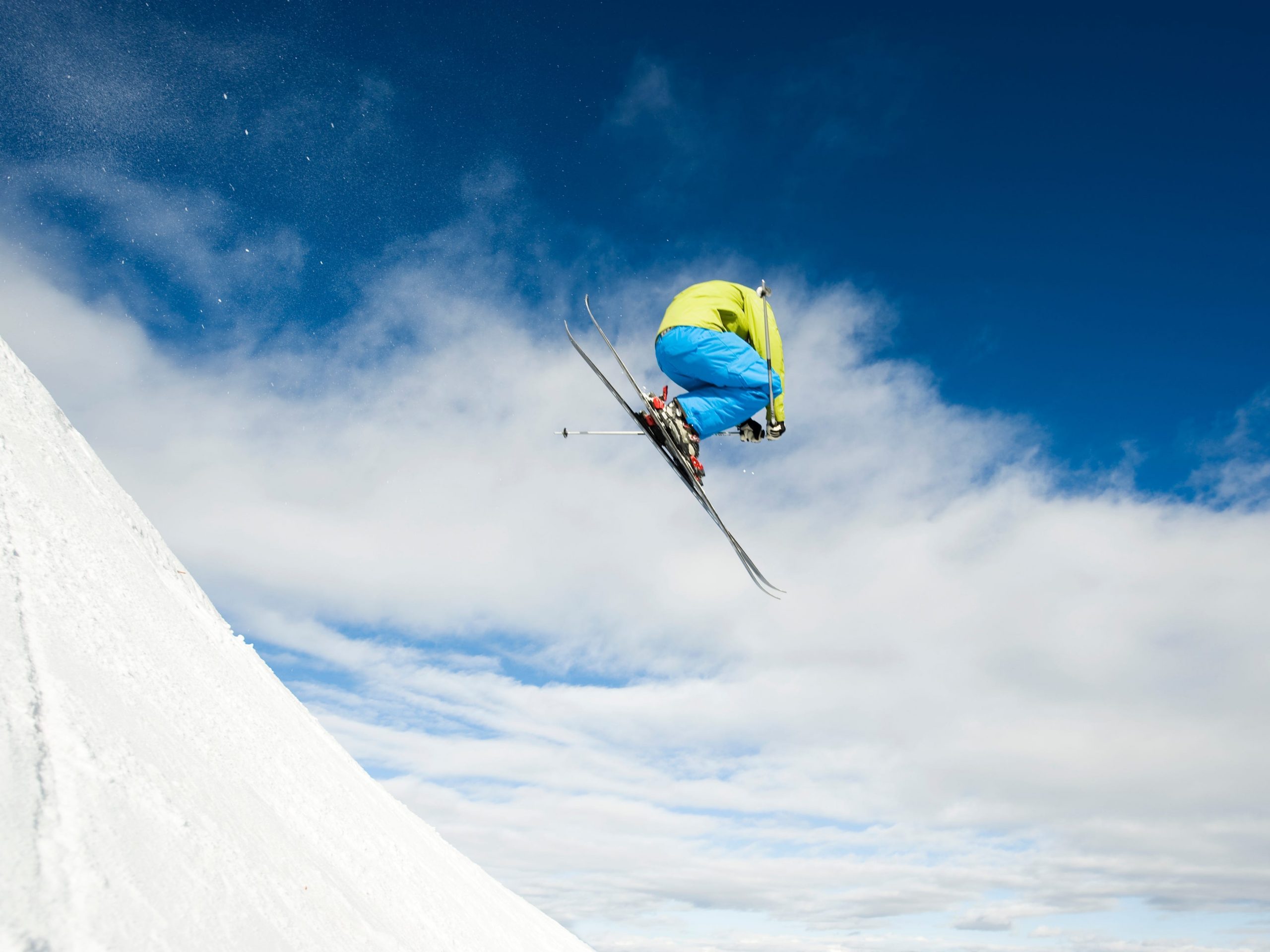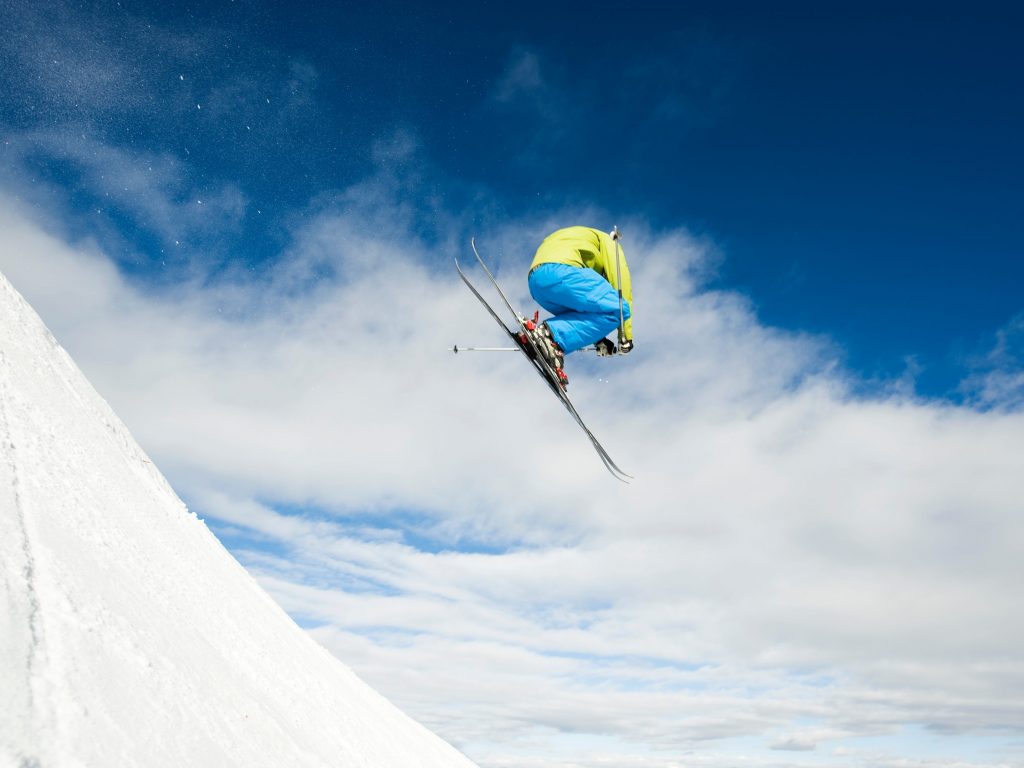
- Ski resorts are at risk of warmer temperatures and changes in snowfall from the climate crisis.
- Planes contribute to warming and shorter snow seasons, but many visitors fly to ski resorts.
- Resorts are trying to be more sustainable. Many of these commitments conflict with visitor growth.
Skiers and snowboarders spend a lot of time and money traveling to resorts. Experts say their flights are contributing to global warming and the reduction of snow seasons in many parts of North America.
Many people drive to local ski hills. But airlines are offering a growing number of flights to places like Aspen, Colorado; Jackson Hole, Wyoming; Park City, Utah; and Denver. A growing number are also taking private aircraft to Colorado and Montana. Private aircraft emit significantly larger amounts of carbon dioxide per hour than any other kind of travel. Experts say this is the most damaging transportation method for the climate.
The ski industry has been aware of how climate change has hurt its operations for at least 15 years. The National Ski Areas Association founded its Sustainable Slopes program in 2000. In 2006, the NSAA updated its environmental charter to include a climate-change policy that was adopted by the ski industry four years earlier.
In June, Vail Resorts and three other large ski companies pledged to be more sustainable across 71 resorts in North America. The pledge includes energy reduction, climate advocacy, waste reduction, and the priority of collaboration over competition on sustainability matters.
But the ski industry is gearing up for another strong winter season. Equipment sales are already growing by triple digits at retailers like REI. Experts tell Insider the industry's growth expectations conflict with its carbon-reduction goals.
Long-term environmental concerns
Professor Daniel Scott of the University of Waterloo in Ontario has been publishing research on the impact of the climate crisis on tourism and the ski industry since 2003. Scott's research has shown the risks to the ski industry include less and more inconsistent natural snow, more snowmaking requirements and costs, as well as shorter seasons.
Discussions about sustainability in the ski industry have focused on reducing waste, lowering energy use, and switching to renewable-energy sources. These are known as Scope 1 and Scope 2 emissions. Visitor transportation is an activity that emits carbon dioxide from assets not owned or controlled by resorts. These are known as Scope 3 emissions.
Places like Whistler Blackcomb in British Columbia have implemented progressive emissions-reduction plans, "but they focused on when you got there," Scott told Insider. "The issue I have with many parts of the tourism industry is they don't own the Scope 3 emissions."
"Air travel is the most significant area of warming in the tourism system," he wrote in the Journal of Sustainable Tourism in a paper published on August 12.
A boom from COVID-19
The pandemic hit the global tourism industry hard. But North American ski resorts continued to draw visitors, including 10.5 million last season. Many of them were new skiers and snowboarders or ones returning to the slopes after time away. These visitors were encouraged to visit ski resorts as a safe way to exercise outdoors after one in five traditional gyms closed down.
There are additional signs this extra enthusiasm is sticking around. Reservations are up 20% among lodges owned by Alterra Mountain Co. compared to last season. Vail Resorts said sales of its Epic Pass were up 67% through September 17 compared to the same period in 2019, according to Travel Weekly.
Significant out-of-state demographics
Before the pandemic, many of the most popular ski destinations relied on out-of-state visitors who drove long distances or traveled by plane. In Utah, 61% of visitors to the state's ski slopes in 2019-20 were from places like Texas (5%), New York (4%), and other countries (7%), according to data from Ski Utah.
Nearly half (48%) of visitors to Whistler Blackcomb came from outside of Canada for the fiscal quarter ending on Jan. 31, 2020. Whistler is owned by Vail Resorts and is North America's largest ski destination.
Colorado had an even higher ratio of nonlocal overnight visitors. Market research showed four of out five travelers in 2020 came from elsewhere, and more than one in three (35%) traveled by air.
The return of flying
By April, air-travel volumes to Jackson Hole and Colorado ski country had risen 12% over the previous year. In October, Aspen Snowmass offered a limited $75 promotion for one-way airfare from Southern California. The National Business Aviation Association told airline operators to anticipate pre-pandemic traffic volumes for the upcoming ski season, especially on weekends and over the holidays.
Many ski visitors are also using private aircraft, which soared in use during the pandemic. Towns like Aspen already receive many more private flights than commercial ones during peak tourism periods, according to data from the flight-tracking company FlightAware. That number will likely grow. The private-aviation company Wheels Up also told Insider it plans to launch a ski vertical for its members.
Limited measurement and solutions
Scott said many sustainability strategies at ski resorts and other tourism destinations are flawed unless they tackle the issue of pollution and carbon emissions from visitor transportation. "They have to," he said, "otherwise who will?"
The ski industry's conflict between its sustainability initiatives and its enthusiasm for nonlocal visitor growth isn't unique. Scott cited the 1.5 to Stay Alive campaign in the Caribbean. It's designed to bring awareness of how the islands will be disproportionately affected by the climate crisis. "They all have plans to grow their tourism industry," Scott said. "I remind them: Your climate policy and your tourism policy are incoherent."
